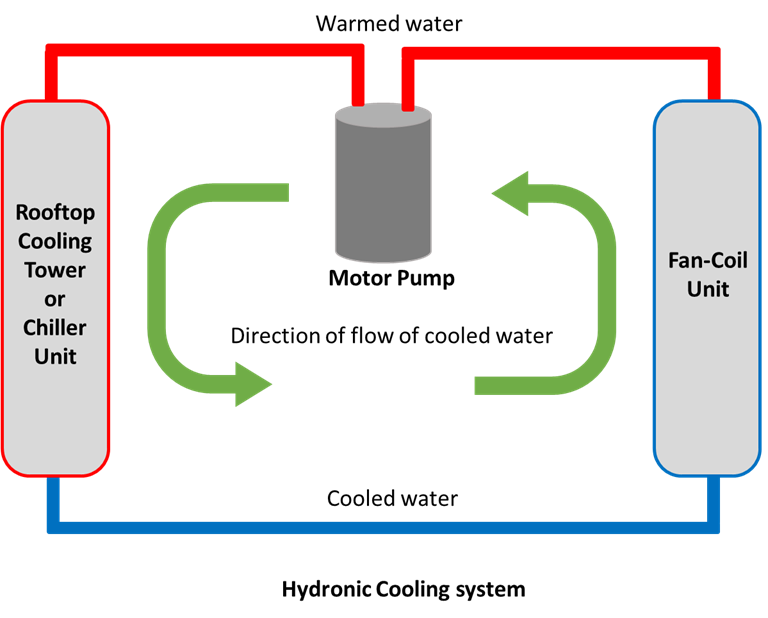Mechanical Cooling
31 Hydronic Cooling Systems
Click play on the following audio player to listen along as you read this section.
https://video.bccampus.ca/id/0_uhtcg65z?width=608&height=70&playerId=23448552
One of the simplest methods of cooling a room is to pass chilled water through pipes in that room. If the ambient temperature in that room is higher than that of the water in the pipes, they will absorb some of that heat energy. If the water did not move, it would quickly reach equilibrium with the room and no more cooling would occur. By constantly moving fresh, cold water through the pipes, and carrying away the warmed water, an energy transfer can take place, with water as the medium that carries the energy.

This system would need some place to dissipate the thermal energy of the room. The water is usually driven to a unit mounted outside of the building, often installed on the rooftop of larger installations, and heat is dissipated into the ambient environment. This method requires that the ambient environment is cooler than the water in the pipes, because with out a temperature gradient, no thermal energy will spontaneously flow from the warmer water in the pipes to the cooler air surrounding it.
Once the water has dissipated its stored thermal energy, and its temperature drops, it is then cycled through the system again, to transfer more heat energy from one area to another.
Some hydronic cooling systems may run pipes deep underground where there is often a steady and reliable temperature gradient between surface and below ground temperatures. This provides a consistent, and energy efficient method to dissipate thermal energy.
This type of system will sometimes incorporate additional cooling components, such as direct expansion cooling (or DX cooling) to further lower the temperature of the chilled water before it returns to the room to continue the cooling process.
A material that can carry thermal energy from one place to another, such as air, water, or refrigerants.
A cooling system that uses water as the medium to capture and remove heat from the desired area.
A mechanical cooling system that uses the evaporation and condensation of a refrigerant to remove heat from an area.

